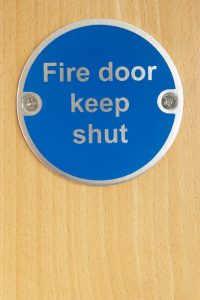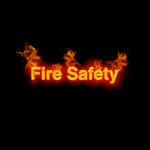In case of a fire outbreak, your first consideration should be ensuring the safe evacuation of the people inside the burning building. However, sometimes fires can spread quickly and hamper people’s evacuation.
The spreading smoke can further complicate the rescue of people trapped in the burning building and hamper firefighting efforts. However, you can take precautions to stop the spread of a fire in your building by installing fire doors and regular fire door inspection.
Unlike conventional doors, a fire door is built to be more resistant to fire. It is also usually fitted with seals around the edges that can halt the spread of fire and smoke to unaffected areas of your building. One of the key components in a fire door is the intumescent strip.
Contents
- 1 What is an Intumescent Strip?
- 2 Why Should You Install Intumescent Strips on Your Doors?
- 3 What Are the Components Used in Fabricating an Intumescent Strip?
- 4 Where Should Intumescent Strips Be Fitted?
- 5 What Size of Intumescent Strips Should You Use on Your Doors?
- 6 What Is the Difference Between Intumescent Strips and Smoke Seals?
What is an Intumescent Strip?
An intumescent strip is a thin seal usually fixed around the edges of a fire door and door frame. The intumescent strip usually blocks the small spaces between the door and frame through which fire flames can seep and move into unaffected parts of your building.
The intumescent strip around the door expands and blocks any gaps around the door space on exposure to heat from a fire. With the gaps around the door closed, the spread of a fire can be contained, albeit for a while.
Why Should You Install Intumescent Strips on Your Doors?
 There are several key reasons why you should ensure that your fire doors have intumescent strips, including:
There are several key reasons why you should ensure that your fire doors have intumescent strips, including:
- They help halt the spread of a fire giving you valuable time to carry out a proper evacuation.
- Intumescent strips also help contain the quick spread of smoke from the burning part of the building to other areas. Smoke is a major reason for fatalities in the event of a fire, not to mention that it usually hampers the efforts of firefighters because it decreases visibility.
- By halting the spread of the fire, intumescent strips will give you more time to save your property.
Note that the primary function of intumescent strips on fire doors is to contain the spread of a fire and not the smoke. To prevent smoke from filtering into other parts of your building in the event of a fire, you also need to add smoke seals around your fire door.
What Are the Components Used in Fabricating an Intumescent Strip?
Intumescent seals are typically made of intumescent materials.
An intumescent material is a substance that does not burn immediately on exposure to heat but usually expands in volume while decreases in density.
Intumescent seals can be made from a wide range of synthetic polymers and resin binders such as silicone or epoxy.
Where Should Intumescent Strips Be Fitted?
Intumescent seals are typically fixed into the door frame, but they can also be fitted into grooves along the door.
To determine the most ideal placement of intumescent seals, it is essential to consider your door design.
What Size of Intumescent Strips Should You Use on Your Doors?
As mentioned earlier, intumescent strips will help halt the spread of fire in your property, but they will not hold the raging flames forever. The duration that these strips can hold fire back is usually determined by the thickness of the film used.
The standard intumescent strips available in the market can help contain a fire for either 30 or 60 minutes.
If you require an intumescent seal on your door that can contain a fire for 30 minutes, you should use a film that is between 10mm to 15mm thick.
On the other hand, if you need the seal to hold out for around 60 minutes, you should use an intumescent film that is at least 20mm thick.
What Is the Difference Between Intumescent Strips and Smoke Seals?
A smoke seal is a film that is usually placed between the door and the entire door frame to stop toxic smoke from seeping into other areas of a building that have not yet caught fire. Unlike an intumescent seal that can stop the spread of fire and some smoke, a smoke seal only stops the spread of smoke but does not contain the spread of fire.
The main difference between a smoke seal and an intumescent seal is that once affixed to the door frame, a smoke seal is visible, but an intumescent seal is not usually visible.
Note that fire safety experts advise that both smoke seals and intumescent seals are fitted on fire doors for total protection in case of a fire.
When buying a fire door for your building, it is recommended that you check whether it comes fitted with both an intumescent strip and smoke seal. If you buy a fire door with both components with a 30 minutes resistance rating, it should be labelled ‘FD30S’. If you are purchasing a fire door with a 60 minutes resistance rating, it should be labelled ‘FD60S’.




